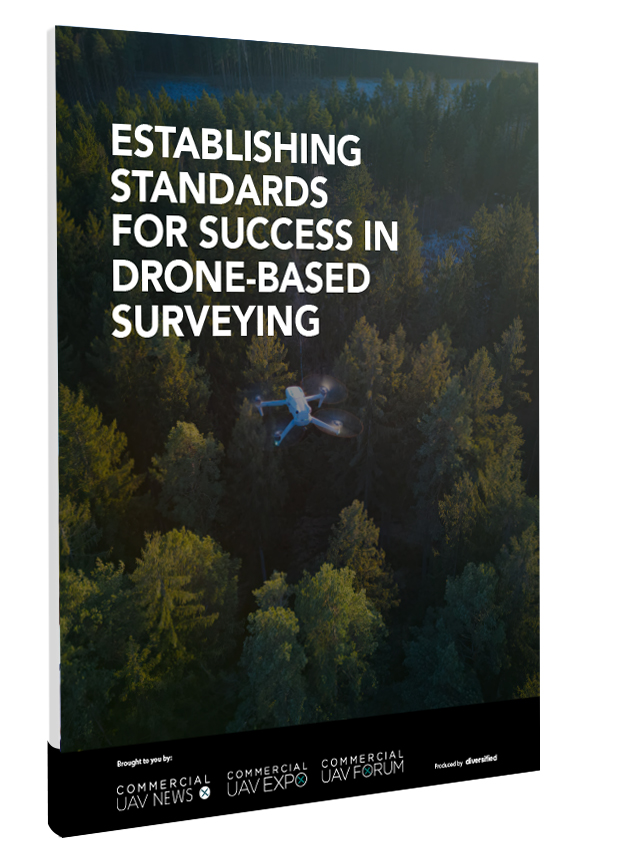Like many European countries, Poland has seen an increase in the use of drones in recent years. According to Unmanned Airspace, Poland’s air navigation services agency (PANSA) released a statement that there were 668,786 drone operations in the country for the year 2023, representing 12.7% year-over-year growth. Moreover, data from the Civil Aviation Office reported that there were 222,086 UAV operators registered in Poland at the end of 2023.
Accelerated adoption of drones for commercial and government uses, coupled with increased production of drones and drone-related systems, are driving these increases. The market research firm Statista said that, in 2024, “the revenue in the Drones market in Poland amounts to US$27.6m,” and the market is “projected to grow annually by 3.36% (CAGR 2024-2029).”
Expansion of the drone market in Poland can be seen in the many new drone-focused companies that have started in the country, along with efforts to create alliances and gain customers outside of Poland. For example, the Taiwan News reported earlier this year that a government-backed drone supply chain alliance in Taiwan “signed a memorandum of understanding (MOU) with the Polish-Taiwanese Chamber of Industry and Commerce” to promote drone development. The move makes Poland the second ally of the Tawain alliance, following the United States.
Continuing our UAVs Across Europe series, the following examples show how Polish companies are adopting and expanding the use of drones for commercial purposes.
Military-Inspired Counter-Drone Solutions
Inspired by drone technology used in Ukraine’s war with Russia, the Polish counter-drone firm Advanced Protection Systems (APS) introduced a new interceptor drone earlier this year. According to the company, the vehicle “autonomously tracks and knocks down unmanned aerial vehicles (UAVs) through direct collision, a powerful and cost-effective solution to the threat.” The drone uses APS’ FIELDctrl radars, various neutralization tools, CyView C2 command and control software, and machine learning algorithms to detect differences “between drones and objects such as birds, while providing real-time threat detection and reporting.” The drone is part of the APS SKYctrl system, which has proven effective in countering Russian drones in Ukraine. The system has also shown its ability to help protect power plants, refineries, telecommunications assets, and other infrastructure facilities.
Pseudo-Satellite for Stratospheric Research
A recent project by the Polish startup company Cloudless could lead to innovations for the use of drones in areas such as environmental protection, agriculture, forestry, meteorology, and natural disaster response. Earlier this year, the company announced that it had successfully flown its ULEP-1 (Ultra Long Endurance Platform) unmanned aerial vehicle from an altitude of 24,784 meters. As reported in sUAS News, the drone ascended under a special balloon, and then flew for 2.5 hours while conducting a series of research tests.
Acting as a kind of “pseudo-satellite,” the Cloudless UAV could serve as a tool for conducting extensive stratospheric research. According to the sUAS News article, the solar-powered drone “will be able to stay above the Earth’s troposphere for a long time” and “will fill the gap between aircraft and space satellites.” Moreover, drones like the ULEP-1 “are many times cheaper to produce and use than satellites, and they enable, among others, Earth observations with greater accuracy in real time.”
Systems for UAV-Airspace Integration
Making sure uncrewed systems can operate in the general airspace in a safe and organized manner is one of the great challenges facing our industry, and many countries are taking different approaches. In Poland, Aerobits is addressing this issue by providing subsystems for UAS airspace integration. The firm focuses on both crewed and uncrewed air traffic control systems, and it supports “the transformation process of manned aviation, in line with the NextGen philosophy.”
Aerobits boasts a number of achievements in its quest to integrate UAVs with general aviation, including a recent effort with Droniq to develop European standards for system solutions necessary to creating UTM systems. Through this partnership, Aerobits explains, drones are fitted with “a special LTE modem called Hook-on-Device” that sends positioning information continuously over a cellular network to the DFS UTM system. Aerobits asserts that this system ensures the controller “always receives an accurate picture of all air traffic participants in its vicinity.”
Want more insights on UAVs Across Europe?
Commercial UAV Expo Europe will bring the commercial UAS ecosystem together. The event will serve as the pivotal platform for commercial drone professionals across Europe to explore, connect, and innovate within the rapidly evolving world of UAS.















Comments